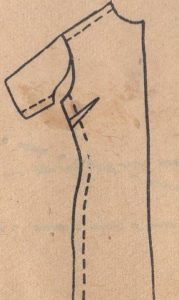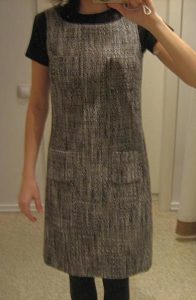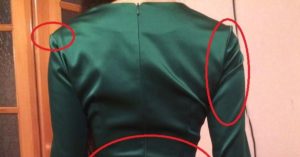 Every girl has encountered a situation where the dress has become too big. Many people needlessly hide the product deep in the closet or throw it away altogether. You can adjust its dimensions yourself at home, regardless of the area of treatment.
Every girl has encountered a situation where the dress has become too big. Many people needlessly hide the product deep in the closet or throw it away altogether. You can adjust its dimensions yourself at home, regardless of the area of treatment.
We'll tell you how to sew a dress at home.
Preparing for work
The initial stage in any work is preparation.
We prepare the following tools and materials in advance:
- dress;
- sewing meter;
- safety pins;
- pencil;
- threads;
- needle;
- scissors;
- iron;
- sewing machine.
Ways to do the job
When the sewing area has been selected and all the materials have been prepared, we begin to work.
Along the side lines

You can change the size of the dress and precisely fit it to your figure using the side seams. This method is one of the easiest to implement.
In most cases, it is possible to achieve the appropriate size and perfect fit after changing the lateral lines. With their help, the product can be altered in accordance with personal parameters.
To make the size smaller, you should try on the dress. It is recommended to carry out fitting complete with underwear. This will help determine the exact fit of the product.
Along the side stitch, starting from the armpit, we pin off the excess fabric. We mark the new location with a pencil. Don't forget about the allowances (about a centimeter).
Advice: for more comfortable work, it is recommended to try on the wrong side.
Before sewing, it is recommended to baste the dress along the intended seams and try it on again. This will help eliminate possible errors.
If the size is optimal, cut off the excess fabric, carefully fold in the seam allowances and sew. The edges can additionally be finished with a zigzag stitch to prevent the fabric from fraying.
After laying the main lines, carefully remove the approximate seams. Finally, we iron the new seams.
At the waist

You can adjust the waist area, as well as eliminate excess material using darts. Almost every dress has this feature. It is a rare product on the market that does not require additional stitching.
In order to change the waist area using darts, you should try on the dress. We chop off the excess with pins. From the wrong side we mark the new position of the dart, sew it with a temporary seam, manually.
If after trying on the result is positive, cut off the excess material. Using a sewing machine, we sew a line with a minimum step width. Finally, we iron the fresh seams.
Important: Adjust only the dart area, without transforming the side or back stitches.
Breast reduction

You can also correct the chest area using darts. The process is similar to the method described above.
The dress is tried on, the excess fabric is chopped off. After fitting, baste approximate seams and try again. If you are satisfied with the end result, cut off the excess and add a stitch. We iron the finished seams.
Hemming the shoulders
Correction of the shoulder area has a higher level of complexity. To make the dress smaller in the shoulder area, armhole needs to be changed.
We try on the product, mark the required width along the seam and armholes. After applying the marks, remove the dress and fold it in half. When folding you should put one armhole into another. We pin the throat area, armholes, and cuts with pins. Using the previously marked marks, we draw a new line. Let's try it on again. If you are satisfied with the result, cut off the excess and add permanent stitches.
Important: if the dress has sleeves, the armhole line is placed 2 centimeters below the ruler.
Sleeve adjustment

The simplest option for changing the volume of sleeves is to eliminate the excess using a stitch.
You try on the dress, cut off the excess material. Use a pencil to mark the approximate location of the seams and stitch temporarily. Repeated fitting will allow you to take into account all the nuances.
The process follows several times raise your arms up or simply move them in a free direction. The sleeves should not be too narrow to avoid discomfort when using the product.
If the result is satisfactory, the old seams are ripped out. Sew a new line, finishing the edge with a zigzag. The temporary stitches are carefully pulled out.
The problem when a wardrobe item has become too large and inappropriate in size is familiar to every girl. There is no need to give up your favorite dress. You can adjust the product and change the size yourself using sewing skills.


 0
0






Accidentally pressed thumbs down instead of thumbs up! I really liked the article. I was impressed!